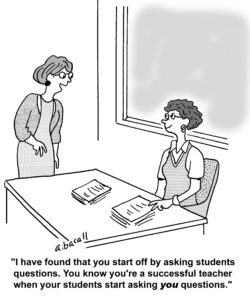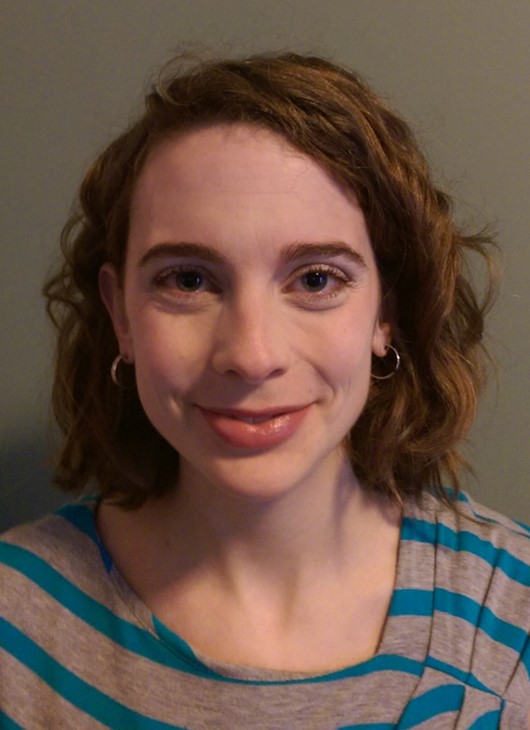Why is Math Taught Differently Now?: Starting the Conversation with Adult Students to Increase Buy-In

by Melissa Braaten
One of the most common questions I get from teachers who attend our trainings is how to get students to accept learning math a new way. “My students expect drills and workbooks,” teachers explain. “How do I get them to be open to trying this new approach?”
This is an excellent question. As adult educators, we know that our students have to be open and invested in their learning for it to be effective. This requires that students understand why they are being asked to engage in certain activities, and that they have enough trust that their effort and risk taking will pay off.
When it comes to math, most adult students who were educated in the U.S. (as well as their teachers!) experienced math classes that were taught very differently from the way most math classes in K-12 are taught today, and very differently from the way the SABES Math center encourages instructors to teach math for adult students. Many students remember math classes that involved a lot of passive listening, note taking, and repeated drills. There was often a heavy focus on memorization and carrying out procedures the “correct” way. Now, we are promoting classrooms where students are actively talking, questioning, collaborating, and sharing a multitude of approaches to deepen their conceptual understanding and problem-solving ability. This requires a shift on the part of both the teachers and the students in how they understand their roles in a math classroom, themselves as math learners, and even their beliefs about math itself. Socialized beliefs and expectations are hard to change, but they can shift. Here is how I start the conversation with students who are new to me and my class.
Agree or Disagree? Conversation Starters
The first thing I have found to be effective is to start the conversation before they even start the class. My focus is on transparency (explaining what they should expect from my class) and education (explaining WHY math is taught differently and why the new teaching approach and strategies will help them learn more deeply and hopefully, permanently). All of my new math students attend a math orientation before they start in my class. This is where we start the conversation, so when they begin we have already had a chance to start building that buy-in and trust.
I have three statements that I use as conversation starters to get students thinking and sharing some of their past experiences and beliefs about math. I ask the students how much they agree or disagree with each statement and, if they can, to explain why. Then I provide some information about why I chose that statement and how it relates to my own approach to teaching math, and to educational research about how people learn mathematics.
Agree or Disagree?
People are born either good or bad at math, and pretty much stay that way.
In American culture there exists the idea that some people are “math people” and some people are not. I start with this statement to see how closely students identify with this belief. Research does not support myth of “math people” versus “non-math people”. It turns out that innate talent and ability is only a small contributor to success in mathematics, compared with the role of good education, perseverance, and mindset. (A good summary of this research can be found in Mathematical Mindsets by Jo Boaler.) People who believe that they are “not a math person” are more likely to hold a fixed mindset about math. This also gives me the opportunity to discuss how different students have different learning styles, and how those who have come to believe that they are “not a math person” may not have encountered the type of math education they need to learn. All the more reason to try a different approach!
Agree or Disagree?
If you are good at math, learning new math concepts will be easy for you.
This statement gives me a chance to discuss the fact that struggle is a normal part of learning. If students hold this belief, they are more likely to interpret the difficulties they will encounter as evidence that they are “not good at math,” leading to a fixed mindset. Teaching math conceptually requires students to build their tolerance for frustration and to engage in productive struggle for understanding and meaning. They need to know that a certain amount of struggle is part of the process, not evidence that they are deficient in some way.
Agree or Disagree?
To be good at math, you have to be good at memorizing the steps.
Because of the way math was traditionally taught in the U.S. and in many other countries, adults often connect memorization with success in mathematics and assume their failure to remember the multitude of steps and procedures is evidence that they are “not math people.” However, the mental abilities required in memorization are not the same as the abilities required for problem solving, perseverance, and mathematical reasoning.
While we discuss this third statement, I ask, “How many of you have had to memorize something in math class? How many of you have forgotten something you once memorized in math class?” Usually, all hands go up (including mine). We then talk about how the brain has difficulty retaining information that we memorize without understanding (like trying to memorize a song in a language you don’t understand)(Stigler, Givvin, & Thompson, 2009).
This provides a nice opportunity to talk about how math education in the U.S. has changed to emphasize conceptual understanding and problem solving, rather than the rote memorization of procedures. I ask students if they have any children in their lives and if so, whether they have noticed that math homework looks different from what they remember. Usually many hands go up! I explain that my classroom will teach math similar to the way it is being taught in K-12. Why? For one thing, decades of research, such as the Trends in International Mathematics and Science Study (TIMSS) showed that math education outcomes in the U.S. were poor compared to other countries, even countries with similar resources. This outcome was mostly attributed to differences in how math was taught: for example, students in the U.S. experienced much more passive, rote, and memorization-based instruction than counterparts in Germany and Japan. (A useful discussion of these findings and their implications can be found in The Teaching Gap by James Sigler and James Hieber.) While some students could handle the memorization demands, other could not, and this approach left many students with math fear and aversion. I tell them that in addition to experiencing teaching techniques in my classroom that might work better for their learning style (if they struggled with traditional math education), they will also be in a better position to support the children in their lives with homework.
Lastly, we talk about how advances in technology have changed the types of skills needed in the economy. While NASA used to employ human “computers” to carry out complex calculations, we now have digital computers that can calculate more quickly and accurately than humans ever could. However, while computers (mostly) are good are following directions, they aren’t as great at problem solving. Many types of employment require people who can collaborate and creatively solve problems, using computers and calculators as effective tools to carry out swift calculations. The way we taught math in the 1950s made more sense before computers, because being able to calculate quickly was a valuable skill on its own. Now, it is not very useful if the person cannot think critically about real problems and how they can use math to solve them.
No approach is perfect, but I have found that having these open and listening conversations with students before they start my classes has helped tremendously with their openness and buy-in to learn math in a new way. And once they experience the satisfaction that comes from engaging in productive struggle and reasoning their way to solutions, other types of brain-based motivation kicks in, and the students themselves become the best advocates for this way of learning math.
Best wishes to all the teachers who are working hard to socialize math differently!

Melissa Braaten is an adult education instructor at Catholic Charities Haitian Multi-Services Center in Dorchester, MA. Melissa has taught ASE and pre-ASE math and reading, as well as ABE writing, computer skills, and health classes. Melissa also is a training and curriculum development specialist for the SABES Mathematics and Adult Numeracy Curriculum & Instruction PD Center at TERC. She is the author of many articles for Math Musings, our Adult Numeracy blog.
